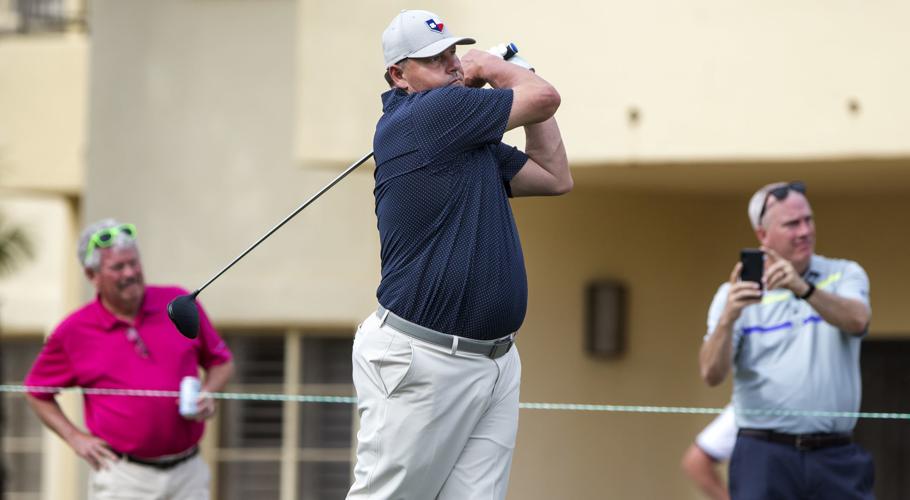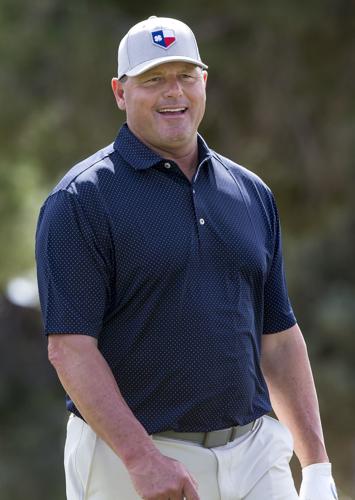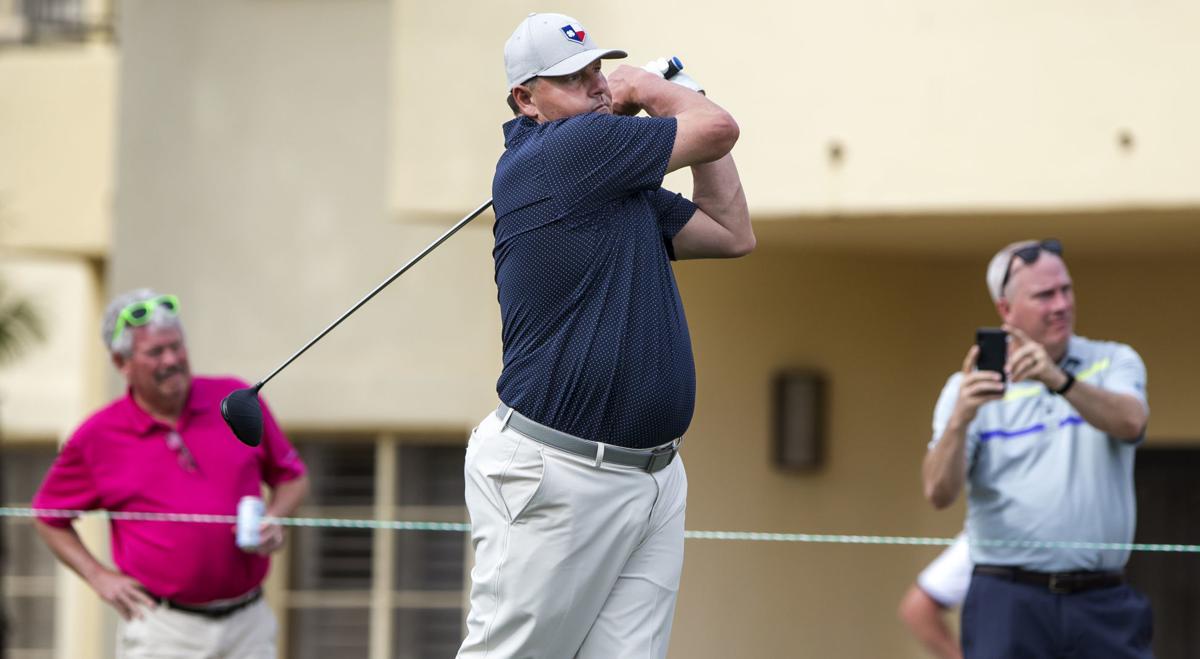From a distance, John Smoltz and Roger Clemens looked like two regular guys getting ready to play a round of golf.
And on Thursday afternoon, that’s exactly what they were doing — participating in the Jose Cuervo Pro-Am at the Cologuard Classic at Omni Tucson National Resort. Smoltz will tee off Friday, armed with a sponsor’s exemption in the tournament. Clemens will return Saturday to take part in the tournament’s Celebrity Challenge.
But make no mistake: There is nothing “regular” about Smoltz and Clemens, two of the greatest right-handed pitchers baseball has ever seen.
Smoltz, pitched 21 years, nearly all of them with the Atlanta Braves. He was a starter and a reliever, a Cy Young winner, a World Series champion, an eight-time All-Star, an NL saves leader and, after retirement, a Hall of Famer.
Clemens pitched 24 years, most of them with the Boston Red Sox and New York Yankees. He won seven Cy Youngs, was an 11-time All-Star and a one-time American League MVP.
Naturally, their paths crossed. The first time they pitched against each other was Game 4 of the 1999 World Series. Clemens came come out on top, pitching the Yankees to a 4-1 win and the world championship. The Braves led in the first three games and ended up losing. Smoltz felt the pressure.
“I knew going up against him in Game 4, if I give up a run, I’m in trouble. We booted a couple balls,” Smoltz said.
Smoltz had Tommy John surgery following the season, something that changed the direction of his career. He moved to the bullpen upon returning and recorded 55 saves in 2002, the National League record at the time.
In 2005, Smoltz returned to the starting rotation and met Clemens again — this time in Game 2 of the National League Division Series against the Houston Astros. The outcome was different. Smoltz and the Braves won 7-1.
Smoltz was dealing with a torn muscle under his armpit, and wasn’t initially sure he could start the game. He told his catcher, rookie Brian McCann, every pitch he was going to throw in the first inning.
“I faced the Astros a hundred times, and I told him we’re going to throw (Craig) Biggio three straight sliders; he’s going to swing at all three, and we’re going to throw all sliders the first inning and then fastballs the rest of the game,” Smoltz said. “First three pitches were three sliders, Biggio swung, and I could see his eyes in his mask as he was throwing around to third. He told me later he realized he was way out of his league when stuff like that happens.”
Clemens said Thursday that he remembered the 18-inning game three days later when he was summoned to relieve for three innings, something he had done just once before.
“It makes you appreciate more what (Smoltz) did starting and relieving and how he was able to get his body ready to do both,” Clemens said. “What he did starting, relieving — it’s pretty remarkable. … You have to certainly have a different mindset.

Roger Clemens laughs after finishing his putt on the 16th hole during the second day of the Cologuard Classic Pro-Am.
“I was walking around in a T-shirt and tennis shoes with my jacket and they said, ‘You need to change.’ I thought I was going to like pinch-bunt, because our relief guys don’t really bunt. Then, next thing you know — they keep my jerseys locked up so they don’t disappear — and the next thing you know, they’re going through a box getting my jerseys out, and I’m sitting in the bullpen by myself going, ‘There’s nobody else to go in; I’m going to be in that game.’ I don’t know, I was 44 (years old) or whatever. It was just crazy.”
Clemens threw seven warm-up pitches and told his bullpen coach he was good to go.
He struck out four and gave up one hit.
Both pitchers faced a long list of great hitters during their careers and agreed that San Diego Padres legend Tony Gwynn was the toughest to get out. Clemens said the scout for an All-Star Game advised him to “throw a two-seamer right down the middle” if he faced Gwynn.
“I thought they were messing with me … (but) he was that good,” Clemens said.
Gwynn hit .444 against Smoltz in his career.
“If I could have gone back, I would have told him everything that was coming, and I would have thrown it right down the middle because he was so good at taking away your best stuff and going with where the pitch was. … He laughed when I threw him a knuckleball, but that was the ultimate respect. It was the first knuckleball I’ve ever thrown, and it was going to be to him.”
On the golf course, there are no knuckleballs. The onetime pitchers can’t dictate the tempo anymore. Instead, Smoltz and Clemens play more of a waiting game.
“We both knew what we could do on the mound, and I don’t think anything unnerved us,” Smoltz said. “On the golf course, you’re going to get to a point where you don’t have that fundamental down pat, and you’re hoping you hit a good shot versus you know you hit a good shot.
“That’s what I’m working on. Each tournament has allowed me to learn some of that. The best way I could explain it is you execute a pitch the way we know how to execute without holding back or overthrowing. In golf, it’s the opposite. Sometimes I three-quarter it. I’m learning the tempo that I need in between shots.”






